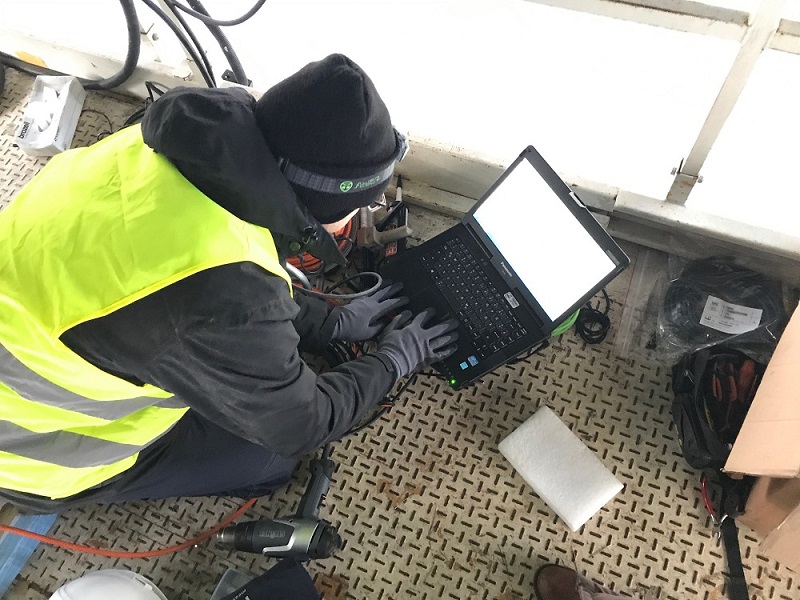Within just four weeks, the HBM team installed a total of 69 linear strain gauges in two measurement sections, along with a strain gauge rosette and four Pt100 temperature measuring points for correcting the temperature-induced measurement errors of the recorded strains. The measuring points were specified by GRASSL in such a way that any significant changes in the measured variables, which are caused by normal operating conditions, can be recorded and evaluated. The data can then be used to identify further damages or structural changes in the support system.
The sensors were then connected to one control cabinet per section using 1,000 meters of measuring cable. In this case, two Quantum X MX1615B strain gauge amplifiers and three rugged SomatXR MX1615B-R measuring amplifiers guarantee the precision and reliability of data acquisition. All measured data is recorded 24/7 using HBM's catman AP measurement data acquisition software and stored on a central measuring computer. The raw data is statistically processed directly on site.
The most important aggregated data, such as the Rainflow data, is then automatically transferred to the engineering office via a mobile LTE data link for analysis. This also allows remote access at any time to check the condition of the measuring system and analyze the measured data live.
Despite the tight time frame, the test measurements with defined load and load position on the Mönkedammfleet and Graskeller viaducts could be carried out as planned. Following this, the long-term measurements were initiated to measure the actual load at the relevant points.
After completing the infrastructure monitoring by the start of 2021, the experts at the GRASSL engineering office will make a forecast about the structures based on the determined strain on the steel under the actual traffic load. Based on the results determined by GRASSL, the two culturally protected sites can then be made fit for the future.



